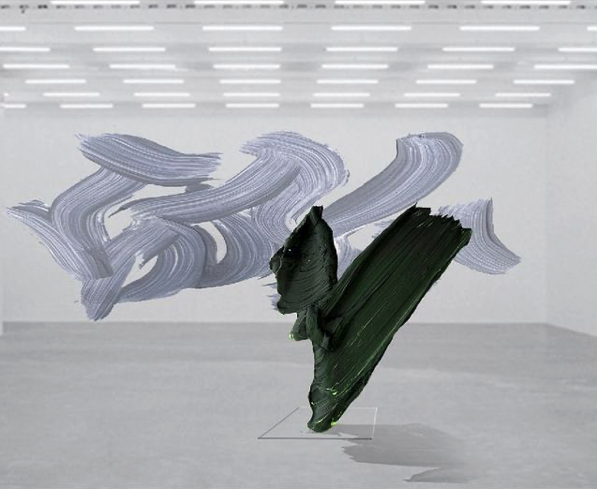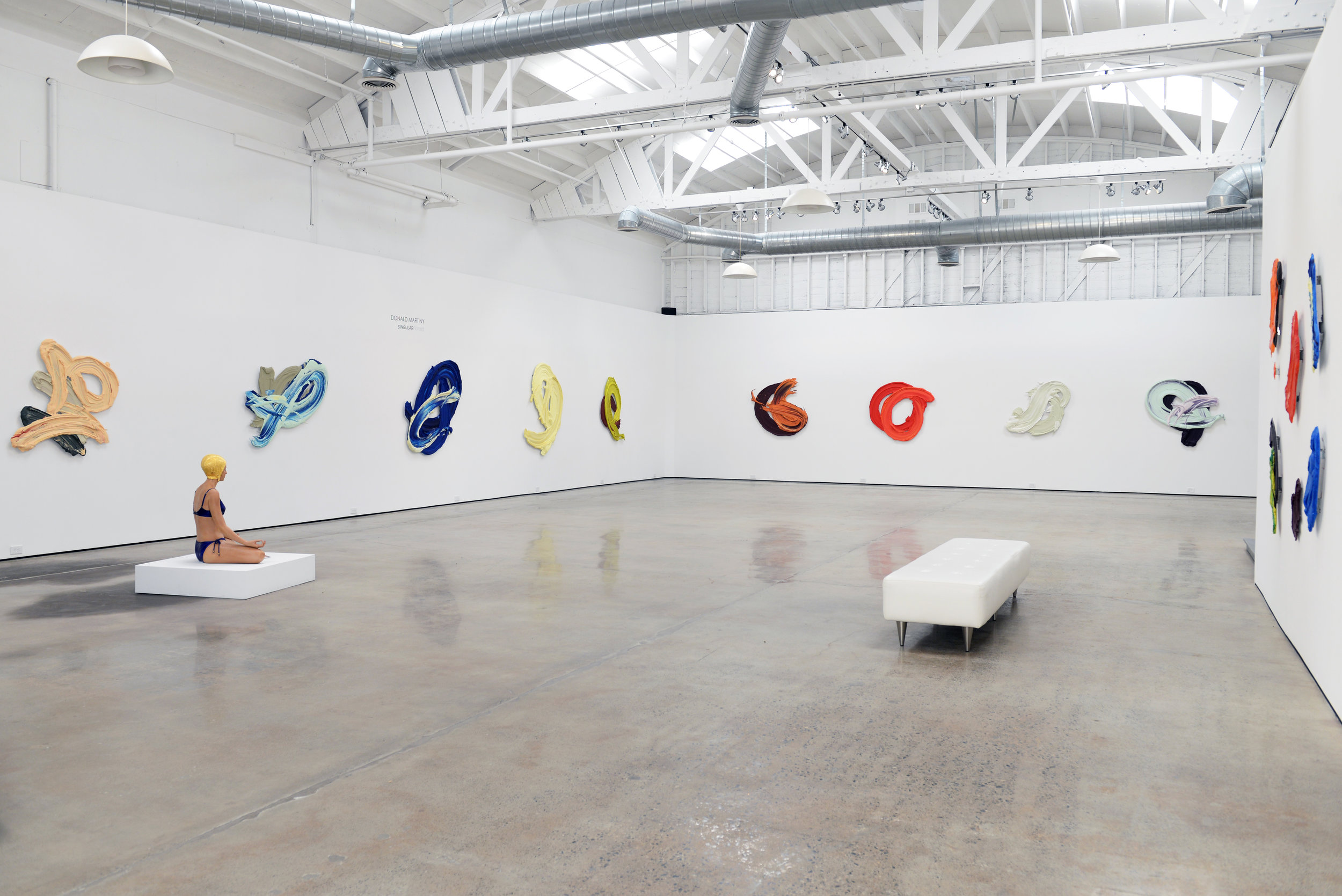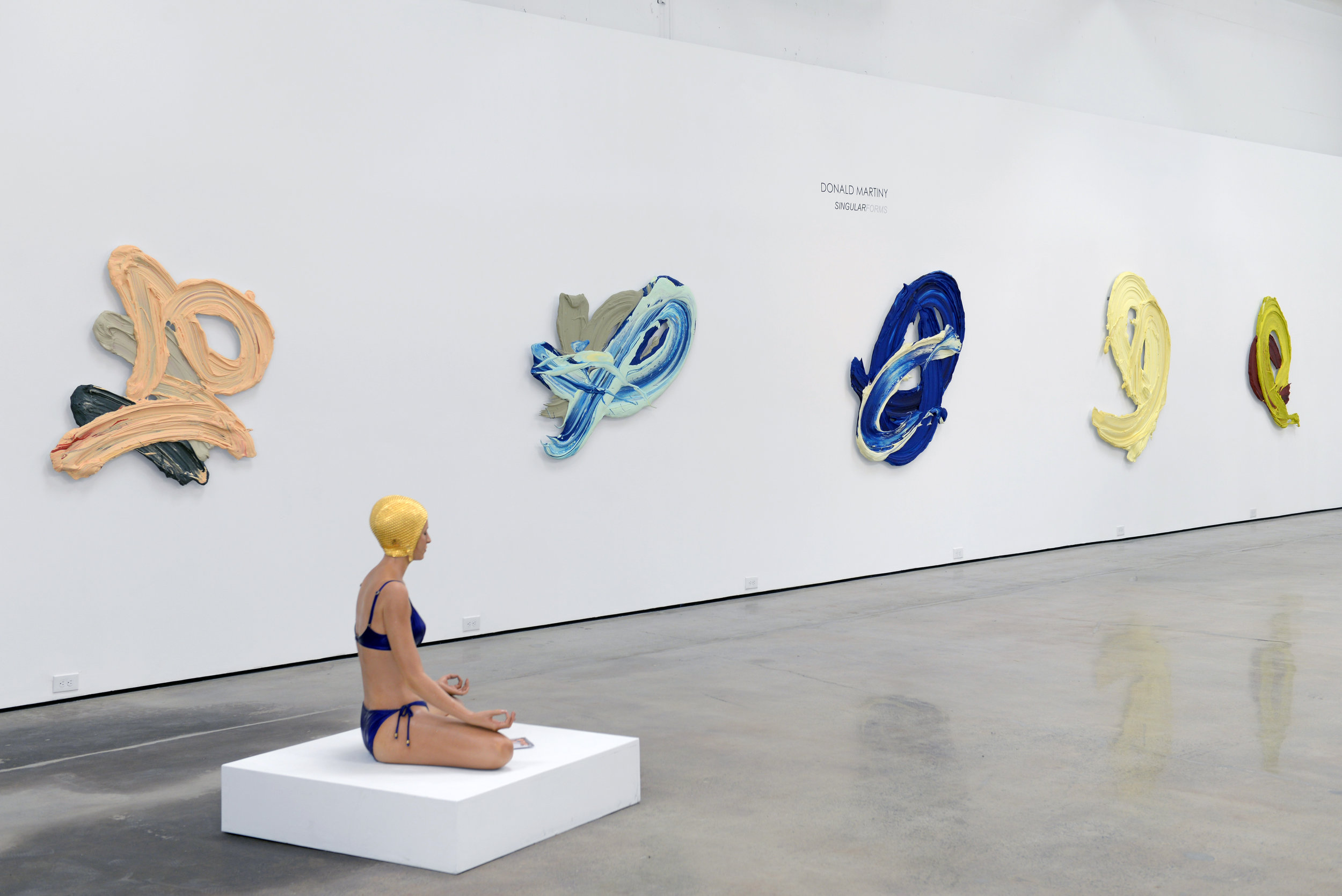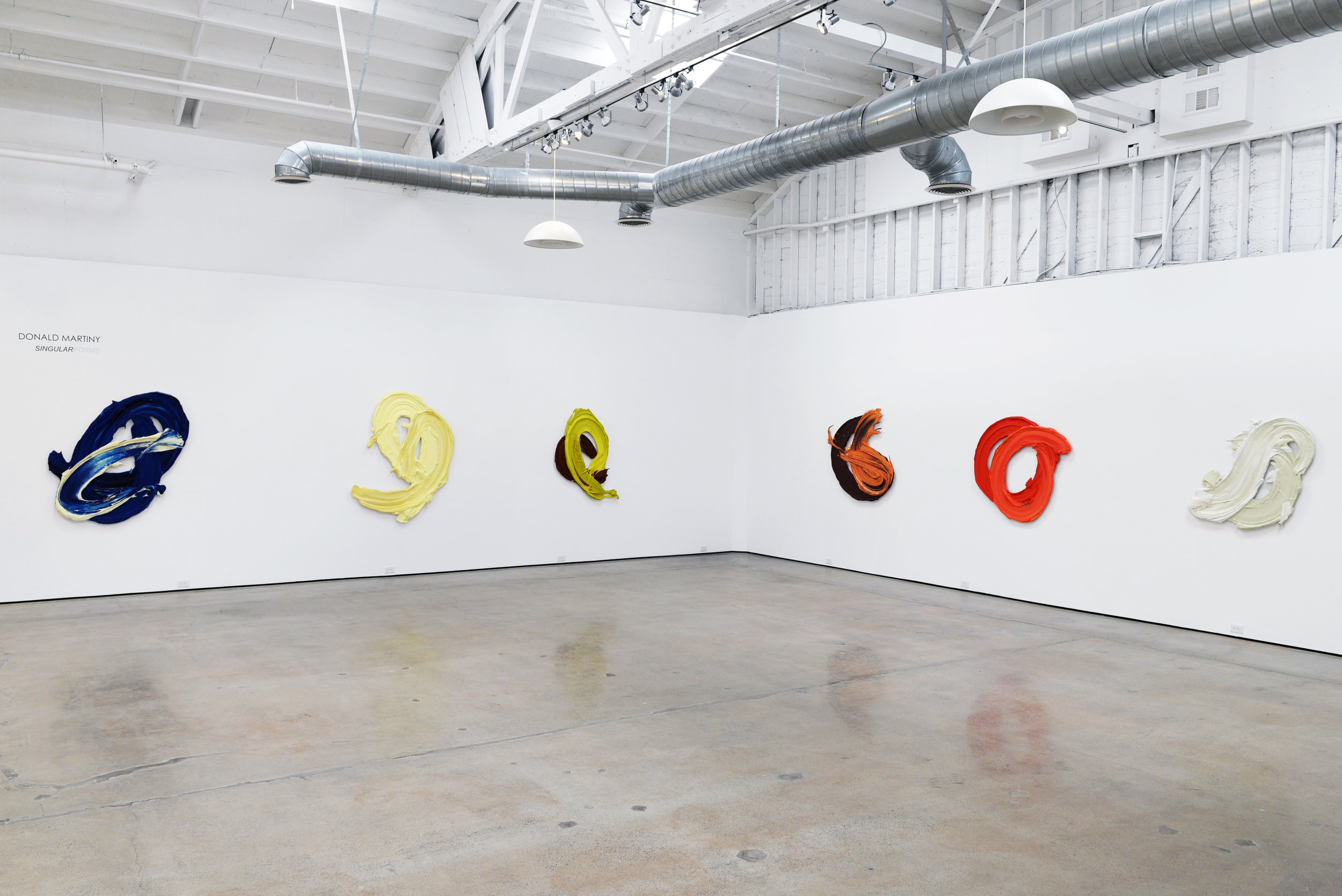But that freedomto wield a brush in what looks like a more haphazard manner was picked up by the great masters of the next century: Velázquez, Hals, and Rembrandt, who recognized the expressive possibilities of paint freed from the object it describes. The slashing strokes that depict the bodice of the little princess in Las Meninas, or the trailing broken exhalations of some fine sable brush that give her hair its fragile luminosity, have an expressive power divorced from conventions about how to make something appear more “real.” At a distance, this evidence of the painter at work dissolves into a more coherent whole; up close the visible brushstrokes bring us nearer to the artist because they are such clear evidence of a hand following the dictates of the mind and eye. The ability to suggest filmy and evanescent stuff like fabrics and hair in just a few seemingly offhand gestures also looks like a mark of the painter’s confidence, as if he (or more rarely she, in those days) were saying, I can use the barest minimum to make you believe what you see.
Closer to our own times, the brushstroke is allied to all the -isms of the forward march of Modernism. The Post-Impressionism of Cézanne and van Gogh, where gestures and slashes and patches of paint become ever more evident; the Expressionism of the great German artists of the 1920s and ‘30s, whose scarcely disguised rage for the times seems allied with a “coarse” way of representing the world; and American Abstract Expressionism of the 1950s, when full-bodied gestural painting became synonymous with a kind of existential angst. (In the mid-‘60s Roy Lichtenstein would parody that posture with cartoony images of the brushstrokes and paint spatters so dear to the New York School.)
Though not yet belonging to an -ism (art history will take care of that), Donald Martiny is drawing as much on the currents of the recent past as the AbEx painters did on Surrealist notions of the unconscious directing their imagery. After a brief stint as a gallery assistant, Martiny worked for many years in advertising, as an art director and later a creative director, in New York and Philadelphia. He continued taking classes and making art in his free time, and he seems always to have been conscious of “advanced” notions about art making, from Donald Judd’s ideas about “specific objects” to Lynda Benglis’s ambitions throughout her career to “get paint off the wall.” And he has surely been aware of the frequent pronouncements that painting is dead, which seem to issue forth every five years or so from some mysterious critical consensus, only to be proved a false alarm as painters continue to paint—or at least work with paint as their preferred medium.
One of the more formative episodes in Martiny’s career of making art and looking at art seems to me his attempt to “deconstruct” a de Kooning. Like many who are learning their craft, the artist made copies early in his career, of old masters like Vermeer and Ingres, and in 1972 of one of de Kooning’s Woman IV in the Nelson-Atkins Museum of Art in Kansas City. What he thought was going to be an easy exercise turned out to be the hardest of all. “It was more like building something,” he has said, “because every gesture in the painting does something different. I realized that the architecture of the brushstrokes was as important to the painting as other elements, like color and drawing.”
Another influential encounter was with Barnett Newman’s astonishingly radical painting from 1950, called The Wild. The work is 1-5/8th inches wide by nearly eight feet tall and represents the “zip” from his larger paintings, such as Vir Heroicus Sublimis, isolated and given a sculptural presence on the wall. Martiny saw the works in 2002 and, realizing that The Wild was every bit as powerful as the bigger canvas, made his own, more painterly and substantial homage to The Wild about a decade later.
From analyzing de Kooning’s brushstrokes to spinning his own riff on the “zip,” it seems an idea had been planted and was maturing, and it becomes an understandable leap from seeing brushstrokes as “architecture” to liberating them from their context altogether. And that’s the direction Martiny has been pursuing since about 2010: big lush exuberant sweeps of pigment that are neither paintings nor sculptures but hover in some space all their own. Which is not to say that they are free of the connotations that Judd so emphatically eschewed in his art. You cannot make a shape or use a color without triggering a response in the brain; the disembodied brushstroke immediately says “art” (not cake decorating or sandwich making); cooler tones provoke a different emotional response from warmer hues. And because Martiny’s paintings are generally scaled to the human body—the height of a viewer, or the breadth of our outstretched arms—they assume a certain animism, aligned with the way a body makes a gesture or the way the artist makes his art. In getting rid of a ground (like a canvas or panel) altogether, as he notes, “the painting reaches out to the viewer and relates to the space around it far more strongly.”
Martiny is very much part of a hallowed tradition of American painting that goes back to Jackson Pollock. His paintings, like Pollock’s, are largely achieved by working on the floor, an approach that was a breakthrough in its day and went on to influence painters like Helen Frankenthaler, Kenneth Noland, and Morris Louis. He starts with a small sketch on paper and then repaints that on to a sheet of plastic. When the paint is dry, if he is satisfied, he traces the form onto a piece of aluminum, and then cuts away the metal, leaving only the irregular shape of the painting. The aluminum backing and painted shape, joined together, then offer another kind of sketch, and he repeats the process on a much larger scale, using as many as 30 or 40 gallons of paint mixed with a polymer medium until it is about the consistency of Vaseline. Sometimes he uses a wide brush or sponges to manipulate the pigment, but more and more of late his hands get into the act too. When he judges the work to be complete, it goes from the plastic to another aluminum backing that can then be affixed to the wall.
For the first couple of years into making the giant brushstroke paintings, Martiny worked with the most basic colors—blue, red, green, yellow, or orange. They still inform his palette, but of late he’s also been experimenting with “off” colors or adding other hues to the mix. “By changing the values or exploring the addition of other colors, it’s become easier to see the architecture of the gesture,” he says. “I like the process to be visible.”
The late Robert Rauschenberg once talked about his desire to act in the gap between art and life. Donald Martiny is one of a generation of artists with very diverse aims—Polly Apfelbaum, Angel Otero, and Jason Otero are others—who are acting in the gap between painting and sculpture. It seems a brave new territory, at the moment more like a current than a movement, but one that seeks to harness the tactile and decorative possibilities of paint while borrowing the actual physical presence unique to sculpture. Its roots are many and broad, looking back to Minimalism and the New York School, but also finding a deeper heritage in the innovations of painters like Titian and Rembrandt, who reveled as much in the language of paint and brush as they did in the emotional impact of their subjects.
Ann Landi
November 2016
Ann Landi is a contributing editor of ARTnews and writes frequent reviews for The Wall Street Journal. She is also the author of the four-volume Schirmer Encyclopedia of Art and the founder/editor of Vasari21.com.
Download the PDF here. With many thanks to Madison Gallery, La Jolla, CA.










